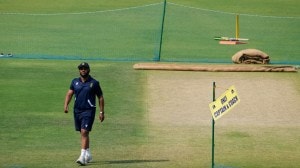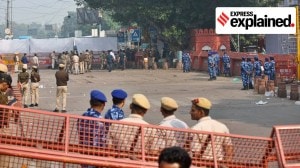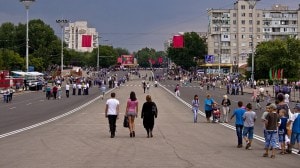Nithari killings: Supreme Court acquits Surendra Koli, orders his release
The Nithari killings came to light with the discovery of skeletal remains of eight children from a drain behind businessman Moninder Singh Pandher's house in Noida on December 29, 2006.
 In all, the police lodged 19 FIRs against the two in connection with alleged crimes against 19 girls. (Express photo)
In all, the police lodged 19 FIRs against the two in connection with alleged crimes against 19 girls. (Express photo)Observing that “suspicion, however grave, cannot replace proof beyond reasonable doubt” and “courts cannot prefer expediency over legality,” the Supreme Court Tuesday set aside the conviction of Surendra Koli in a case of rape and murder of a teenage girl, one of the many cases that arose out of the Nithari serial killings two decades ago, and ordered his “forthwith” release.
The bench of Chief Justice of India B R Gavai and Justices Surya Kant and Vikram Nath reversed Koli’s conviction while allowing his curative petition, and directed that he be released if not wanted in any other case.
The bench noted that Koli had already been acquitted in 12 of the 13 cases against him and wondered how the same set of evidence that did not hold good in the 12 cases could be relied upon for conviction in just one.
“There was no credible chain of custody or expert testimony establishing that a domestic help with no medical training could perform the precise dismemberment described. These gaps were central to the acquittals in the twelve cases. They are equally present here,” the bench said.
It found procedural violations in the manner in which his Section 164 statement was recorded by the magistrate. It also pointed to loopholes in the recoveries allegedly made and said the forensic analysis only helped establish the identity of the victims and did not link the accused to the crime.
The Nithari killings came to light with the discovery of skeletal remains of eight children from a drain behind businessman Moninder Singh Pandher’s house in Noida on December 29, 2006. Koli worked at Pandher’s house.
Further digging around the house led to the recovery of more skeletal remains. Most of these remains were those of poor children and young women who had gone missing from the area.
Pandher and Koli, who were arrested the same month, were accused of abducting and raping children and women and disposing of their bodies in a drain. It was alleged that Koli killed the girls and chopped the bodies before throwing them away. There was even suspicion of cannibalism.
On October 16, 2023, the Allahabad High Court acquitted Koli in 12 cases and Pandher in two. Both had earlier been awarded the death penalty in these cases relating to rape, murder, and destruction of evidence, among others, by a special CBI court in Ghaziabad.
Pandher was accused in six cases – he was earlier acquitted by the trial court in three cases and in one by the High Court. He was also convicted under the Immoral Traffic (Prevention) Act, 1956, and in another case arising out of the Nithari killings, against which no appeal was filed. However, the High Court said that he had already completed the sentence prescribed under the conviction.
In July this year, the Supreme Court dismissed all appeals filed by CBI, and the families of the victims challenged the acquittals. Koli, however, continued to remain in prison, as he was convicted in one of the cases and was sentenced to life imprisonment by the High Court.
A special CBI court convicted both Koli and Pandher in the case, which was related to the death of a 14-year-old girl. On appeal, the Allahabad High Court acquitted Pandher but upheld Koli’s conviction and confirmed his death sentence.
Following this, Koli moved the Supreme Court with a plea, which was dismissed in 2011, and his review petition against this was also dismissed by the apex court in 2014.
In January 2015, the Allahabad High Court commuted Koli’s sentence to life imprisonment in this case, citing “inordinate delay in the disposal of the mercy petition
On Tuesday, acquitting Koli in the 13th case, the Supreme Court said, “We must emphasise that Article 21 of the Constitution insists on a fair, just and reasonable procedure. That insistence is at its acutest where capital punishment is imposed. Although the petitioner’s death sentence in this case was commuted to imprisonment for life on 28.01.2015, the conviction continues to carry the gravest consequences. To allow a conviction to stand on evidentiary basis that this Court has since rejected as involuntary or inadmissible in the very same fact-matrix offends Article 21 of the Constitution. It also violates Article 14 of the Constitution, since like cases must be treated alike. Arbitrary disparity in outcomes on an identical record is inimical to equality before the law. The curative jurisdiction exists to prevent precisely such anomalies from hardening into precedent.”
“The offences in Nithari were heinous, and the suffering of the families is beyond measure. It is a matter of deep regret that despite prolonged investigation, the identity of the actual perpetrator has not been established in a manner that meets the legal standards. Criminal law does not permit conviction on conjecture or on a hunch. Suspicion, however grave, cannot replace proof beyond reasonable doubt. Courts cannot prefer expediency over legality. The presumption of innocence endures until guilt is proved through admissible and reliable evidence, and when the proof fails the only lawful outcome is to set aside the conviction even in a case involving horrific crimes,” the bench said.
The verdict also posed some questions about the investigation.
It said, “when investigations are timely, professional and constitutionally compliant, even the most difficult mysteries can be solved and many crimes can be prevented by early intervention. It is, therefore, genuinely unfortunate that in the present matter negligence and delay corroded the fact-finding process and foreclosed avenues that might have identified the true offender. The scene was not secured before excavation began, the alleged disclosure was not contemporaneously recorded, the remand papers carried contradictory versions, and the petitioner was kept in prolonged police custody without a timely, court-directed medical examination. Crucial scientific opportunities were lost when post-mortem material and other forensic outputs were not promptly and properly brought on record and when searches yielded no incriminating traces that could be forensically anchored to the alleged events. The investigation did not adequately examine obvious witnesses from the household and neighbourhood and did not pursue material leads, including the organ-trade angle flagged by a governmental committee. Each lapse weakened the provenance and reliability of the evidence and narrowed the path to the truth.”





- 01
- 02
- 03
- 04
- 05


























